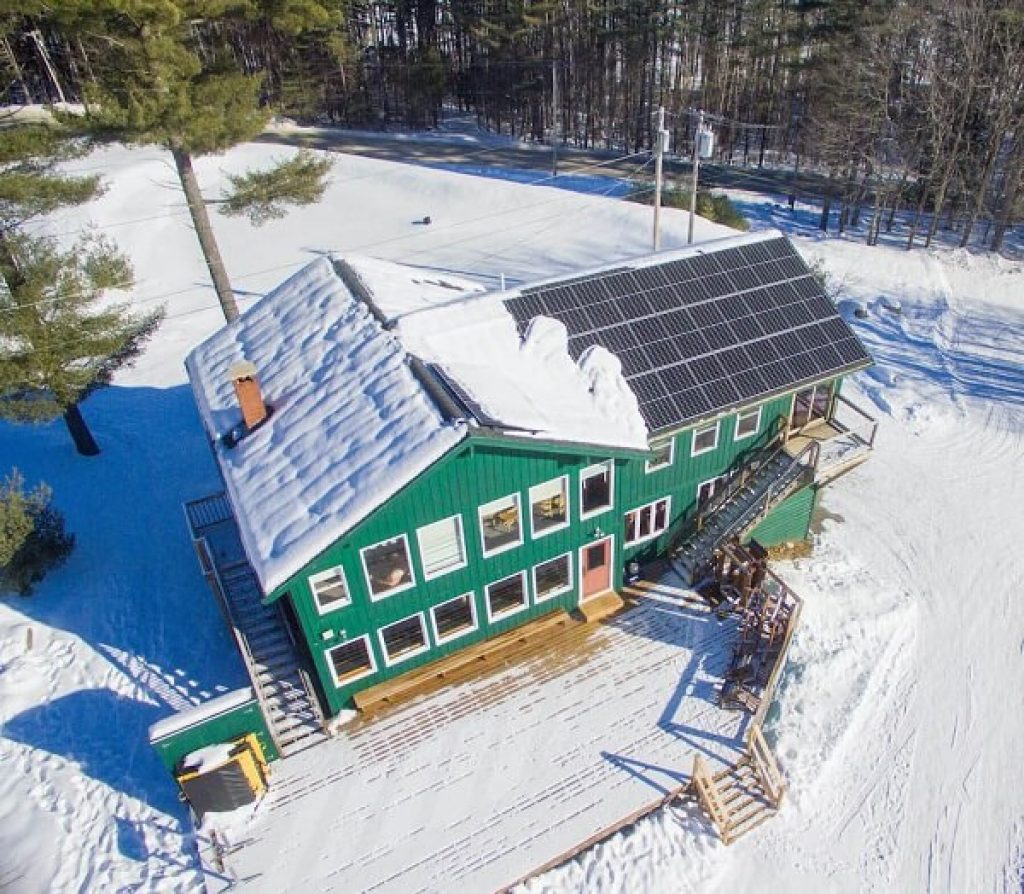
One of the main drawbacks of solar panels is that they don’t work during the night. There’s no sunlight, which means there’s no power being generated. However, what happens when it’s a cloudy day out or when it’s raining? And what happens during the winter months when there can be snow, and most of the days there’s no sun shining through the clouds?
This is one of the most common queries that worries the owners of photovoltaics. It’s a natural question to come up since we tend to use more electricity during the winter, which mainly goes for heating. Even more so, in countries like the United Kingdom, does it make any sense to get solar panels when the winter seems to last for five months, and it feels like every other day it’s raining. Click on this link to find out more.
Do solar panels work on cloudy days?
The short answer is yes. They do. However, there is a massive misconception that these devices are ineffective during the winter months. Energy from the sun is available throughout the year, and we’re going to explain how they work so you can get a clearer picture of the science behind them.
Inside every panel, there are photovoltaic cells. These are small components that are frequently made out of silicon. The magic of science unfolds at the atomic level. In every single atom, there are protons, neutrons, and electrons.
As the name suggests, electricity is made up of electrons moving in a specific manner. The light rays that we usually call sunlight are made up of photons that go deep inside the atoms to shake up the electrons. Then, these electrons get energized and charged, which forces them to move. The movement itself creates a current, similar to a river, and directing the flow can be used for thousands of different applications.
Also Read: 4 Reasons Your Small Home Should Use Solar Energy
Are they efficient in the winter?
The main point that you need to understand is that energy is not created from the heat of the sun. Instead, it’s created from the light itself. It might surprise you to find out that electrical equipment operates much better in cold temperatures compared to warm weather.
The same thing is true about photovoltaics. Whenever the temperature increases, the resistance in the circuit does the same. It makes it harder for the current to pass through the obstacles, which leads to inefficiency.
More heat impairs the effectiveness of these cells, which seems counterintuitive at first. You’ll get more power on a cold and sunny day compared to a hot sunny day. In colder regions, this difference can be noticed much more easily, due to the difference in energy between the electrons inside the panel, compared to the photons coming from the sun.
Is the energy in the winter considered green?
Yes, it is. The only difference between the summer and the winter is the length of the day. During the summer, days are usually longer, which means that the panels will have more time to create electricity.
On the other hand, during the winter, the days are several hours shorter, which means less power. You can visit https://www.energieversum.de/photovoltaik-im-winter/ to read more. Usually, you will get the most out of your panels between March all the way through October, which is considered to be non-winter months.
How does snow affect them?
If you live in an area where a lot of snow falls, that might be a nuisance. When the panels are completely covered with snow, no light will pass through. However, because these devices are made to be flat, a small amount of snow will be able to melt right away since the surface heats up a little bit.
Most of them are directed towards the sun, which means that it would be harder for snow to accumulate as it does on other surfaces. But in the event of a complete cover-up, it would be wise of you to clean them up if you want to get free power.
Do cloudy and rainy days make a difference?
The right answer here is that it depends. When there are thick, dark clouds, there won’t be any light that passes through. On the other hand, when there’s a light cover of see-through and white clouds, you might get even more power since the weather will be colder.
The amount of power you get might surprise you, especially when the weather is not ideal. This is due to the fact that panels work indirect and diffused light conditions. Diffused light gets dispersed by the atmosphere before hitting the ground.
It’s similar to shining a laser through a curved lens. A single ray moves radically if you move it even a little on the surface of the lens. However, when a bunch of beams is directed on the curved piece of glass, they’ll fall on a larger surface.
How can you store it?
Here’s a fun physics fact. Energy can’t be created. Instead, it can only change from one form to another. That’s what’s happening when you’re using the TV that’s plugged into the solar. The only way to keep using that power is to store it for later use, which means that you’ll have to get some large batteries. This is especially important during the winter when the days are much shorter. Getting a good battery can help you overcome seasonal needs, and it will last for years if you know how to maintain it properly.